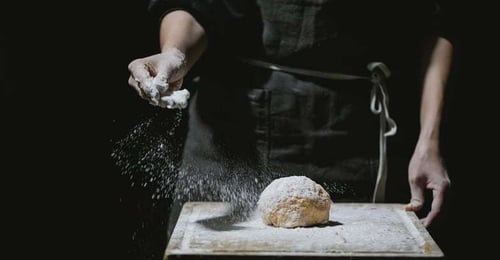The Nutritional Power of Extra Virgin Olive Oil Extra virgin olive oil (EVOO) is not just a...
Easy Olive Oil and Herb Bread Recipe for Beginners
Discover how to bake a delectable olive oil and herb bread with this simple guide, perfect for beginners!
Click on the audio link above for instant listening gratification!

Why Olive Oil and Herb Bread is Perfect for Beginners
Baking bread can seem like a daunting task for many beginners, but olive oil and herb bread is a fantastic starting point. The inclusion of olive oil not only makes the dough easier to handle but also keeps the bread moist and flavorful. Additionally, the aromatic herbs add a burst of freshness, making the bread more forgiving if it's not perfect in terms of texture.
This recipe doesn't require any specialized equipment or advanced techniques, making it ideal for those new to baking. The straightforward steps and readily available ingredients ensure that anyone can achieve a delicious loaf on their first try.
Essential Ingredients for Your Olive Oil and Herb Bread
To get started, you'll need some basic ingredients. Here's what you'll need for a simple olive oil and herb bread:
1. All-purpose flour or bread flour 2. Active dry yeast 3. Warm water 4. Extra virgin olive oil 5. A mix of fresh or dried herbs (such as rosemary, thyme, and oregano) 6. Salt 7. A pinch of sugar (optional, to help activate the yeast)
These ingredients are easy to find in most grocery stores, and you might already have some of them in your pantry.
Step-by-Step Guide to Making Olive Oil and Herb Bread
1. Activate the Yeast: Dissolve a teaspoon of sugar in warm water and sprinkle the yeast on top. Let it sit for about 5-10 minutes until it becomes frothy.
2. Prepare the Dough: In a large mixing bowl, combine the flour, salt, and herbs. Create a well in the center and pour in the yeast mixture and olive oil. Mix until a dough forms.
3. Knead the Dough: Transfer the dough to a floured surface and knead for about 10 minutes until it becomes smooth and elastic.
4. First Rise: Place the dough in a lightly oiled bowl, cover it with a damp cloth, and let it rise in a warm place for about an hour, or until it has doubled in size.
5. Shape the Loaf: Punch down the dough to release the air, then shape it into a loaf or desired form. Place it on a baking tray lined with parchment paper.
6. Second Rise: Cover the loaf with a cloth and let it rise again for about 30 minutes.
7. Bake the Bread: Preheat your oven to 375°F (190°C). Bake the loaf for 25-30 minutes or until it turns golden brown and sounds hollow when tapped on the bottom.
8. Cool and Enjoy: Let the bread cool on a wire rack before slicing. Enjoy your homemade olive oil and herb bread warm or at room temperature.
Tips and Tricks for the Perfect Loaf Every Time
Here are some tips to help you achieve the perfect olive oil and herb bread every time:
1. Use Fresh Ingredients: Fresh herbs and high-quality olive oil can significantly enhance the flavor of your bread.
2. Proper Kneading: Kneading helps develop the gluten, giving the bread its structure. Don't skip this step.
3. Check Your Yeast: Ensure your yeast is fresh and active. Expired yeast can prevent the dough from rising properly.
4. Monitor Rising Times: Rising times can vary based on the temperature and humidity of your environment. Keep an eye on the dough and adjust the timing as needed.
5. Don't Overbake: Overbaking can dry out your bread. Keep a close watch during the last few minutes of baking.
Creative Variations and Serving Suggestions
Once you're comfortable with the basic recipe, you can experiment with various variations and serving ideas:
1. Cheese and Herb Bread: Add grated Parmesan or cheddar to the dough for a cheesy twist.
2. Garlic Infusion: Mix minced garlic into the dough for a fragrant garlic bread.
3. Herb Mixes: Try different combinations of herbs like basil, dill, or sage to create unique flavors.
4. Serving Suggestions: Serve your olive oil and herb bread with olive oil and balsamic vinegar for dipping, or use it as a base for bruschetta. It also pairs wonderfully with soups, stews, and salads.
The possibilities are endless, so feel free to get creative and tailor the recipe to your taste.
Join our mailing list by filling in the form below to get the latest news, recipes and product updates!

